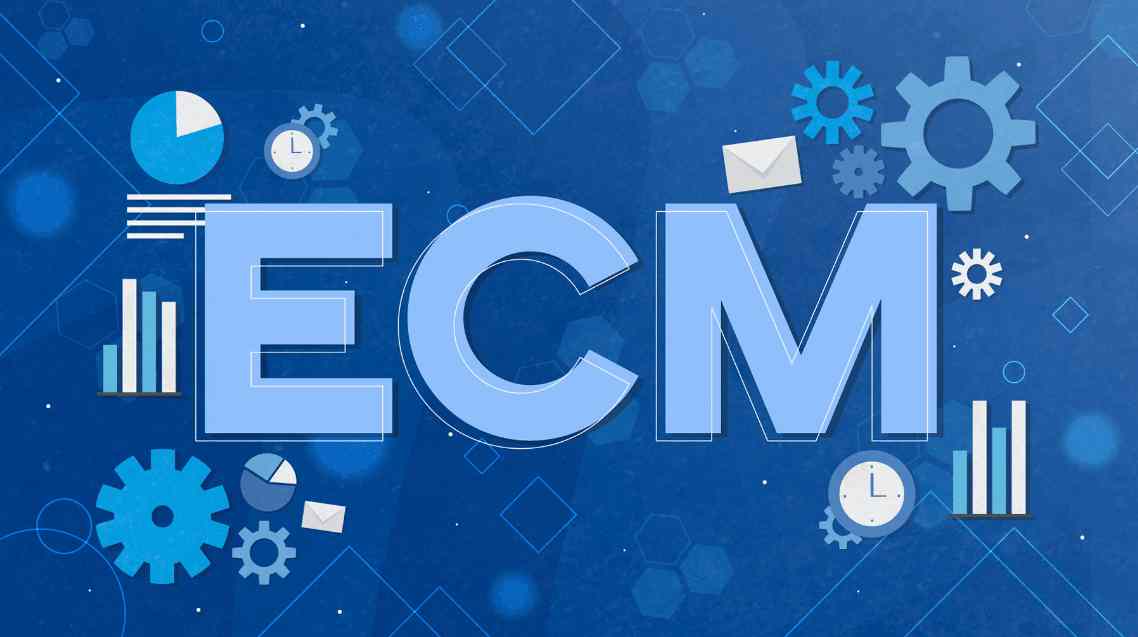Since the 1980s, relational databases have played a pivotal role in managing business information, representing a significant advancement over hierarchical databases with their rigid tree-like structures, and what’s even more, they allowed to eliminate paper documents in favor of electronic files instead. The relational model organizes data into tables, using rows and columns, where column names establish linkages between tables. While effective within a single database, challenges arise when linking vast volumes of data across databases within the entire organization, especially at scale, due to inconsistent naming conventions.
Enterprise Content Management software (ECM) systems are more intricate, comprising a file management system for storing content assets and a relational database for storing associated metadata. However, despite these content services platforms core functionalities, Enterprise Content Management system and data management have historically existed in separate realms. Research by AIIM reveals that 27% of organizations with ECM systems lack integration with other core business systems, and 61% report no connection between ECM and ERP systems. Nonetheless, ECM software for enterprise business allows to manage different types of content, provide document capture, segment unstructured content, provide document management and workflow management, ensure business continuity in terms of document management, and provide wide range of other services.
Traditionally, content management and data management have been approached as distinct disciplines, creating a lack of synergy. Organizations in the content management space have typically viewed and solved document-intensive process problems through the lens of content management software solutions like ECM, ERM, Information Governance, Taxonomy, and Metadata. ECM has been the central focus for large-scale document automation in electronic format and paper elimination within specific business processes, especially after implementation of cloud technology.
However, evolving process challenges are reshaping organizations’ perspectives on ECM’s role and the interplay between data and content. For some, content management is no longer the primary lens through which process problems are addressed. Instead, it is considered one element among various capabilities, including semantics, business intelligence, CRM, and ERP, essential for solving contemporary business problems. This shift reflects a broader view that goes beyond the content-centric frame of the past decade, recognizing the interdependence of diverse capabilities in tackling current business challenges.
What is an ECM system?
ECM system (Enterprise Content Management) is a system that provides you functionality to manage your business documents, spreadsheets, scanned images, contracts, and so on, including such vital features as sharing access, data back ups, access control, document editing, commenting, and so on.
All these features allows businesses to effectively manage their documents, avoid data losses, and provide deep insight into what is going on with their content.
ECM system can exist in two forms – as on-premises software or as cloud-based solution, and this difference lies in the field of infrastructure location, not in functionality. On-premises solutions are legacy solutions that came from the late 1980s, as they use analog infrastructure set up on capacities of the company, which surely affects set-up costs and maintenance expenses, as you have to purchase all the hardware and software, set it up properly, find IT specialists to keep it running and also to scale it up when needed.
With the technological development, cloud solutions appeared on the scene, and they are already getting more than 70% of the market share – and this is not about ECM systems only.
Cloud ECM systems have already become the most popular types of ECM systems at all, which means there is a little sense to consider on-premises solution as an option for your business. First of all, it will drain your money at the set up stage, and this is not a great idea to invest that much in such a solution – if in the case of ERP systems it has some sense, in the case of ECM system it sounds weird. Secondly, it will be difficult to scale it up as you will have to pass through all stages of development of new infrastructure for the scaled up solution. Finally, trying to set up an on-premises solution is a kind of trying to stop the flow of time – these solutions are going to be eliminated from the market, and the only field where they do have a chance to still be used is large enterprises that don’t want to eliminate their current infrastructure and solutions they use for years, but even this is not going to last forever.
What are the features of ECM software?
Single source of asset management – you gain full access to content and all electronic documents you have, which makes ECM system a central repository for all your documents.
Movile device access – cloud software provides mobile device access.
Records management – provides record management for all documents.
Access control – you can provide access as both for universal use, and also for individual departments or single departments, or even single employees.
Compliance – most solutions come with satisfied compliance requirements.

